killed
 After informing his chief advisors and cabinet on July 22, 1862, that he would issue a proclamation to free enslaved people, President Abraham Lincoln added that he will wait until the Union Army has achieved a substantial military victory to make the announcement. One might wonder why the president would wait to make the announcement. It seems strange, but the reality is that he was attempting to stitch back together a nation that was being torn apart in a bloody civil war. His decision was a last-ditch, but carefully calculated, executive decision regarding the institution of slavery in America. Slavery was at the heart of the war, but at the time of the meeting with his cabinet, things were not looking good for the Union. to lose the war outright, could put an end to any possibility of freedom and of unity in this nation. The Confederate Army had overcome Union troops in significant battles, and to make matters worse, Britain and France were set to officially recognize the Confederacy as a separate nation. Lincoln was doing everything he could to see to it that that never happened.
After informing his chief advisors and cabinet on July 22, 1862, that he would issue a proclamation to free enslaved people, President Abraham Lincoln added that he will wait until the Union Army has achieved a substantial military victory to make the announcement. One might wonder why the president would wait to make the announcement. It seems strange, but the reality is that he was attempting to stitch back together a nation that was being torn apart in a bloody civil war. His decision was a last-ditch, but carefully calculated, executive decision regarding the institution of slavery in America. Slavery was at the heart of the war, but at the time of the meeting with his cabinet, things were not looking good for the Union. to lose the war outright, could put an end to any possibility of freedom and of unity in this nation. The Confederate Army had overcome Union troops in significant battles, and to make matters worse, Britain and France were set to officially recognize the Confederacy as a separate nation. Lincoln was doing everything he could to see to it that that never happened.
Lincoln’s plan was to issue the Emancipation Proclamation, which strangely, had less to do with ending slavery 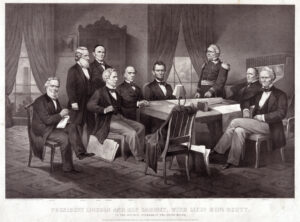 than saving the crumbling union. In an August 1862 letter to New York Tribune editor Horace Greeley, Lincoln confessed that, “My paramount object in this struggle is to save the Union, and it is not either to save or to destroy slavery.” I never knew that, somehow. Lincoln was highly patriotic, and his objective was that of hoping that a strong statement declaring a national policy of emancipation would stimulate a rush of the South’s enslaved people into the ranks of the Union Army. He hoped that such a rush of manpower would resupply the Union forces, while depleting the Confederacy’s labor force, on which it depended to wage war against the North. Lincoln was against slavery, but he was for America more. That seems like a strange compromise, but I assume he thought freeing the slaves was a fight for another day. That decision would eventually get him killed.
than saving the crumbling union. In an August 1862 letter to New York Tribune editor Horace Greeley, Lincoln confessed that, “My paramount object in this struggle is to save the Union, and it is not either to save or to destroy slavery.” I never knew that, somehow. Lincoln was highly patriotic, and his objective was that of hoping that a strong statement declaring a national policy of emancipation would stimulate a rush of the South’s enslaved people into the ranks of the Union Army. He hoped that such a rush of manpower would resupply the Union forces, while depleting the Confederacy’s labor force, on which it depended to wage war against the North. Lincoln was against slavery, but he was for America more. That seems like a strange compromise, but I assume he thought freeing the slaves was a fight for another day. That decision would eventually get him killed.
Lincoln waited to unveil the proclamation until he could do so on the heels of a successful Union military 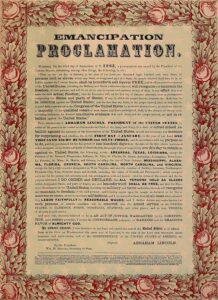 advance, just as he had promised. After a victory at Antietam, Lincoln publicly announced a preliminary Emancipation Proclamation on September 22, 1862, declaring all enslaved people free in the rebellious states as of January 1, 1863. Lincoln and his advisors limited the proclamation’s language to slavery in states outside of federal control as of 1862, which might seem odd, but if the war was lost by the Union, it wouldn’t have mattered anyway, and he needed the support of the North. Not all of the people in the north were in total agreement with the freeing of the slaves, although the vast majority were. The proclamation did not address the contentious issue of slavery within the nation’s border states. In his attempt to appease all parties, Lincoln left many loopholes open that civil rights advocates would be forced to tackle in the future. I have learned, in reference to politics, that many a politician has been forced to practice a little “appeasing” in order to get anything accomplished. I can’t say that is a good thing, but rather that it is sometimes a necessary thing.
advance, just as he had promised. After a victory at Antietam, Lincoln publicly announced a preliminary Emancipation Proclamation on September 22, 1862, declaring all enslaved people free in the rebellious states as of January 1, 1863. Lincoln and his advisors limited the proclamation’s language to slavery in states outside of federal control as of 1862, which might seem odd, but if the war was lost by the Union, it wouldn’t have mattered anyway, and he needed the support of the North. Not all of the people in the north were in total agreement with the freeing of the slaves, although the vast majority were. The proclamation did not address the contentious issue of slavery within the nation’s border states. In his attempt to appease all parties, Lincoln left many loopholes open that civil rights advocates would be forced to tackle in the future. I have learned, in reference to politics, that many a politician has been forced to practice a little “appeasing” in order to get anything accomplished. I can’t say that is a good thing, but rather that it is sometimes a necessary thing.
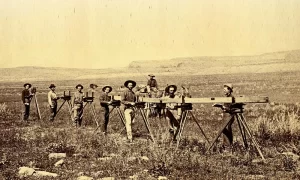 The job of marking out the boundaries of a property, much less an entire nation, while maybe not a complicated job, a big job, nevertheless. The 19th century surveyors were charged with the job of mapping out the entire United States, and to me, that is a huge undertaking. These men were more than just surveyors. These men were the unheralded vanguards of the Old West. They established original geographical boundaries and retraced and identified existing borders in accordance with legal descriptions. It is said that they were part-astronomers, part-geologists, part-engineers, and these mapmakers were also arbitrators when land lines were in dispute. Several wars, and many smaller feuds have been fought and people killed over boundary disputes, and sometimes the surveyor had to be called in to settle the matter.
The job of marking out the boundaries of a property, much less an entire nation, while maybe not a complicated job, a big job, nevertheless. The 19th century surveyors were charged with the job of mapping out the entire United States, and to me, that is a huge undertaking. These men were more than just surveyors. These men were the unheralded vanguards of the Old West. They established original geographical boundaries and retraced and identified existing borders in accordance with legal descriptions. It is said that they were part-astronomers, part-geologists, part-engineers, and these mapmakers were also arbitrators when land lines were in dispute. Several wars, and many smaller feuds have been fought and people killed over boundary disputes, and sometimes the surveyor had to be called in to settle the matter.
Some famous men that we all know started out as surveyors. Men like George Washington, Thomas Jefferson, Abraham Lincoln, Meriwether Lewis, William Clark and Daniel Boone When these men were surveyors, actually risked their lives in the line of duty to map what ultimately became the passes, railroads, towns, dams and other structures that helped form the backbone of the West.
Surveyors were the ones who shaped Western history. Their endurance, sense of adventure, and knowledge of precision tools and mathematical principles became the tools of their trade. In fact, they really became Jocks of all trades. While surveying the many miles of the United States, the had to actually blaze trails, so they had to become woodsman, so they could get through some areas to even begin surveying the borders. They became experts in the science of soil management and crop production. As agronomists they worried that hot weather, combined with dry conditions, can hamper pollination. They had to understand the soil and botany. They had to find their food in the wild, because there weren’t any stores in the rugged, wilderness they were mapping.
It was a hard job, and there were many risks, but these men were strong-willed, and determined…and sometimes their lives were on the line. In 1838, came one of the first incidence of a surveyor being killed. It happened just two years after the Battle of San Jacinto…a battle in which the Texians defeated Mexican General Antonio López de Santa Anna. While surveying on the Guadalupe River north of San Antonio, Indians attacked a survey party and killed nine of the crew, including one surveyor who managed to carve his name, “Beatty,” on a tree before he died. At least seven more survey parties were attacked that spring and summer, from the Rio Frio to the Red Sometimes River.
The surveyors were essential when the railroad was being built. The surveyors were the ones who marked out 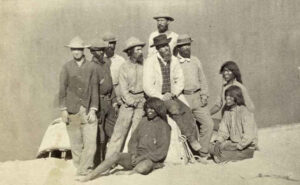 that track lines. They had to make sure they were not overtaking the landowners’ boundaries. The Indians were the main people to fight the surveyors, because they could see more and more of their land being confiscated. What would eventually be good, even for them, was seen as theft to them, and maybe it was, but when we look to the future, it’s easy to see that the land was going be essential to the people of the United States down the road. Nevertheless, the surveyors faced many dangers and really also had to be soldiers, because they were often in a fight for their lives, as they did their work. Surveyors were, and still are, essential to the ever-changing boundry lines in our nation, but that doesn’t make their job an easy one.
that track lines. They had to make sure they were not overtaking the landowners’ boundaries. The Indians were the main people to fight the surveyors, because they could see more and more of their land being confiscated. What would eventually be good, even for them, was seen as theft to them, and maybe it was, but when we look to the future, it’s easy to see that the land was going be essential to the people of the United States down the road. Nevertheless, the surveyors faced many dangers and really also had to be soldiers, because they were often in a fight for their lives, as they did their work. Surveyors were, and still are, essential to the ever-changing boundry lines in our nation, but that doesn’t make their job an easy one.
 There a number of ways for a soldier to be killed in a war, but we very seldom think of an avalanche as one of them. Nevertheless, on Dec 13, 1916, hundreds of Austrian soldiers in a barracks near Italy’s Mount Marmolada, were killed when a powerful avalanche came sweeping over them. As shocking as this seems, over a period of several days, avalanches in the Italian Alps killed an estimated 10,000 Austrian and Italian soldiers that December.
There a number of ways for a soldier to be killed in a war, but we very seldom think of an avalanche as one of them. Nevertheless, on Dec 13, 1916, hundreds of Austrian soldiers in a barracks near Italy’s Mount Marmolada, were killed when a powerful avalanche came sweeping over them. As shocking as this seems, over a period of several days, avalanches in the Italian Alps killed an estimated 10,000 Austrian and Italian soldiers that December.
The avalanches occurred as the Austrians and Italians were fighting World War I, but some witnesses claimed that the avalanches were purposefully caused to use as a weapon. I suppose that could be a possibility, but there was little evidence to prove that theory. Nevertheless, it is possible that avalanches could have been used as an unusual weapon of war at times during the war. It would make sense to use whatever was at your disposal, and the heavy snow could be an easy weapon of mass destruction.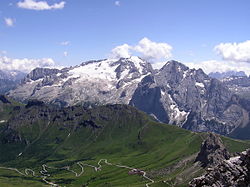
The Italians entered World War I on the side of Britain, France, and Russia against Germany and Austria-Hungary in late April 1915. Over the next three years, a series of bloody battles between the Italian army and the Austrians occurred in the mountainous region along the Isonzo River near the Italian-Austrian border. The weather conditions in the mountains were often a bigger hazard than the actual fighting. An Austrian officer once said “The mountains in winter are more dangerous than the Italians.” This was certainly true in mid-December 1916 when heavy snowfall in the Alps created conditions ripe for avalanches. That left hundreds of Austrian troops, who were stationed in a barracks near the Gran Poz summit of Mount Marmolada, in particular danger. The camp there was well-placed to protect it from Italian attack, but it was vulnerable because it was situated directly under a mountain of unstable snow. The approximately 200,000 tons of snow, rock, and ice plunged down the mountain directly  onto the barracks on December 13, killing 300 soldiers. About 200 soldiers were pulled to safety, but of the dead, only a few bodies were recovered.
onto the barracks on December 13, killing 300 soldiers. About 200 soldiers were pulled to safety, but of the dead, only a few bodies were recovered.
As heavy snow and high winds continued over the next week, incidents like the one at Marmolada continued to happen with disturbing frequency. Entire regiments were lost in an instant. Some of the bodies of victims weren’t found until spring. The best estimate of the losses incurred that fateful December is somewhere between 9,000 and 10,000 soldiers…a shocking number for a weapon of mass destruction that we wouldn’t have ever expected to be a weapon of war at all.
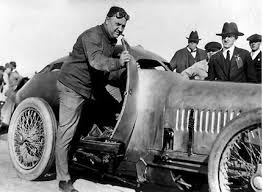 Since there were ways to race, people have been racing. From chariot races to horse races, people soon acquired a taste for speed and for competition. That has never gone away, even though some have paid a dear price for it. When the automobile was invented, it didn’t take long to get to the point of challenges and races. At first, these races took place on he city streets or on highways, but eventually they knew that there had to be a safer way to race.
Since there were ways to race, people have been racing. From chariot races to horse races, people soon acquired a taste for speed and for competition. That has never gone away, even though some have paid a dear price for it. When the automobile was invented, it didn’t take long to get to the point of challenges and races. At first, these races took place on he city streets or on highways, but eventually they knew that there had to be a safer way to race.
The first organized race of the “horseless carriages,” as they were called, was held in France in 1894. The winning speed was less than 10 miles per hour and the winner was disqualified because his steam-driven tractor was deemed not to be a practical vehicle. To me, the whole race was laughable. Ten miles per hour is hardly what I would call a race. The final straw came on April 8, 1916, at the Boulevard Race in Corona, California, when an early racing car driver lost control and careened into a crowd of spectators. The 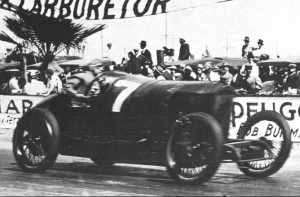 accident killed the driver and two other people. At that time, these racing events were still pretty rare, and this fatal accident encourage organizers to find a better place to hold car races. They came up with the idea of specially built tracks, instead of regular streets.
accident killed the driver and two other people. At that time, these racing events were still pretty rare, and this fatal accident encourage organizers to find a better place to hold car races. They came up with the idea of specially built tracks, instead of regular streets.
While it would seem like things would really get going after that, I wasn’t until twelve years later that the first Grand Prix was held. As time went on and speeds increased, the races became more dangerous. The deadly 1916 Corona Boulevard Race took place on Grand Boulevard in Corona, just east of Los Angeles. “Wild Bob” Burman, had previously set a world speed record for hitting 129 miles per hour. He was driving a blue Peugeot, and leading the race. Burman lost control when a wheel broke and his car crashed through a barrier. Burman died in the accident, along with his ride-along mechanic and a spectator. Five other people in the crowd were seriously injured.
Other racing events that followed, have been even more deadly. When a car crashed into a spectator area at  the 1955 Le Mans, 80 people were killed. Two years later in Italy, 10 spectators were killed at Mille Miglia. I was the last time that race was run. In July 1996, three separate races on the same day claimed victims among the spectators. But, probably the most dangerous of all races has been the off-road Dakar Rally. The best guess is that 47 competitors have been killed in the race’s 27 year history and many more spectators have also lost their lives. The original Dakar Rally ran from Paris to Dakar, Senegal, but fatal accidents in France forced a change in course. The routes have varied since 1999. Modifications have been made over the years to reduce the risk to the public, but drivers remained vulnerable, even to things like the many land mines in North Africa.
the 1955 Le Mans, 80 people were killed. Two years later in Italy, 10 spectators were killed at Mille Miglia. I was the last time that race was run. In July 1996, three separate races on the same day claimed victims among the spectators. But, probably the most dangerous of all races has been the off-road Dakar Rally. The best guess is that 47 competitors have been killed in the race’s 27 year history and many more spectators have also lost their lives. The original Dakar Rally ran from Paris to Dakar, Senegal, but fatal accidents in France forced a change in course. The routes have varied since 1999. Modifications have been made over the years to reduce the risk to the public, but drivers remained vulnerable, even to things like the many land mines in North Africa.

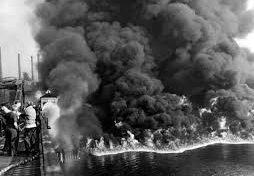 On October 20, 1944, in the city of Cleveland, Ohio, workers at the East Ohio Gas Company spotted a white vapor leaking from the large natural gas tank at the company plant near Lake Erie. It was 2:30 pm on that Friday afternoon, and a leak is never a good thing, but this one would prove to be disastrous. The circular tank had a diameter of 57 feet and could hold 90 million cubic feet of the highly flammable gas. Ten minutes later, a massive and violent explosion rocked the entire area. Flames went as high as 2,500 feet in the air. Everything in a half-mile vicinity of the explosion was completely destroyed. In the ensuing explosion, a smaller tank also exploded. The out-of-control fire that followed the explosion necessitated the evacuation of 10,000 people from the surrounding area.
On October 20, 1944, in the city of Cleveland, Ohio, workers at the East Ohio Gas Company spotted a white vapor leaking from the large natural gas tank at the company plant near Lake Erie. It was 2:30 pm on that Friday afternoon, and a leak is never a good thing, but this one would prove to be disastrous. The circular tank had a diameter of 57 feet and could hold 90 million cubic feet of the highly flammable gas. Ten minutes later, a massive and violent explosion rocked the entire area. Flames went as high as 2,500 feet in the air. Everything in a half-mile vicinity of the explosion was completely destroyed. In the ensuing explosion, a smaller tank also exploded. The out-of-control fire that followed the explosion necessitated the evacuation of 10,000 people from the surrounding area.
Originally built in 1902, the East Ohio Gas Company plant, spanned from East 55th to East 63rd Streets taking up a full ten acres. It provided natural gas to most of Cleveland, including many businesses in the neighborhood in which it was located. By 1940, part of the plant was converted to a liquefaction, storage, and regasification facility, which was one of the most modern gas plants in the country, safely storing large quantities of liquefied gas in four separate holding tanks. These days, we would not have these types of volatile substances stored in a residential area, but back then, before transportation became much more affordable, laborers in those early industrial cities had to be close to their places of employment. A gas storage facility was just one among many industrial operations that were located in a typical working-class neighborhood of that era. However, because the plant was modernized and had many safety features, people living in the area felt they had no reason to fear. That is, until a fateful day in October when “fire fell from the sky.”
The call went out to every firefighting unit in the Cleveland area. It took all of the city’s firefighters to bring the horrific industrial fire under control. In the end, the fire killed 130 people, destroyed two entire factories, 79 homes in the surrounding area and more than 200 vehicles. The total bill for damages exceeded $10 million. When the fire was out, rescue workers found that of the 130 people, killed by the blast, nearly half of the bodies were so badly burned that they could not be identified and in fact, 21 of them were never identified. Two hundred and fifteen people were injured and required hospitalization. The cause of the explosion had to do with the contraction of the metal tanks. The gas was stored at temperatures below negative 250 degrees and 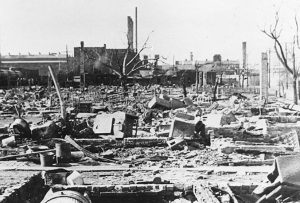
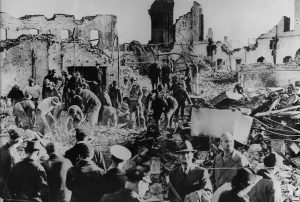 the resulting contraction of the metal had caused a steel plate to rupture. The East Ohio Gas Explosion has since been calculated to be equal to a 2.43 kiloton TNT explosion or 1/6 of the Hiroshima Atomic Bomb. In the aftermath of the fire, everyone knew that changes had to be made to protect laborers, and the people in the neighborhoods. Newer and far safer techniques for storing gas and building tanks were developed in the wake of this disaster.
the resulting contraction of the metal had caused a steel plate to rupture. The East Ohio Gas Explosion has since been calculated to be equal to a 2.43 kiloton TNT explosion or 1/6 of the Hiroshima Atomic Bomb. In the aftermath of the fire, everyone knew that changes had to be made to protect laborers, and the people in the neighborhoods. Newer and far safer techniques for storing gas and building tanks were developed in the wake of this disaster.
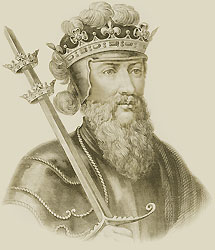 Before scientists learned how to predict the weather, and before the weather predicting equipment came into being, people often found themselves outside, without any place to get under cover, during some really bad storms. Such was the case on Monday, April 13, 1360…later dubbed Black Monday, when a hail storm killed approximately 1,000 English soldiers in Chartres, France. England and France were in the middle of the Hundred Years’ War. The war began in 1337, and by 1359, King Edward III of England was pushing forward to conquer France. In October he sent a massive force across the English Channel to Calais. The French wouldn’t fight back, but rather stayed behind protective walls that Winter, allowing the King Edward’s men to pillage the countryside.
Before scientists learned how to predict the weather, and before the weather predicting equipment came into being, people often found themselves outside, without any place to get under cover, during some really bad storms. Such was the case on Monday, April 13, 1360…later dubbed Black Monday, when a hail storm killed approximately 1,000 English soldiers in Chartres, France. England and France were in the middle of the Hundred Years’ War. The war began in 1337, and by 1359, King Edward III of England was pushing forward to conquer France. In October he sent a massive force across the English Channel to Calais. The French wouldn’t fight back, but rather stayed behind protective walls that Winter, allowing the King Edward’s men to pillage the countryside.
Then in April of 1360 King Edward’s forces burned the Paris suburbs and marched  toward Chartres. The night of April 13, while they were camped outside the town, planning a dawn attack, a sudden storm developed. Lightning struck, killing several soldiers, and hailstones began pelting the men, and scattering the horses. One man described it as “a foul day, full of myst and hayle, so that the men dyed on horseback” Two of the English leaders were killed and the troops panicked…they had no shelter from the storm. They were at it’s mercy. King Edward’s forces suffered heavy losses that some of the men saw as a sign from God, that they should not be fighting against France. King Edward was convinced that they needed to negotiate peace with the French, and on May 8, 1360, the Treaty of Bretigny was signed, marking the end of the first phase of the Hundred Years’ War. King Edward renounced all claims to the throne of France, but he was given control of the land in the north of the country. Nine years later, fighting resumed
toward Chartres. The night of April 13, while they were camped outside the town, planning a dawn attack, a sudden storm developed. Lightning struck, killing several soldiers, and hailstones began pelting the men, and scattering the horses. One man described it as “a foul day, full of myst and hayle, so that the men dyed on horseback” Two of the English leaders were killed and the troops panicked…they had no shelter from the storm. They were at it’s mercy. King Edward’s forces suffered heavy losses that some of the men saw as a sign from God, that they should not be fighting against France. King Edward was convinced that they needed to negotiate peace with the French, and on May 8, 1360, the Treaty of Bretigny was signed, marking the end of the first phase of the Hundred Years’ War. King Edward renounced all claims to the throne of France, but he was given control of the land in the north of the country. Nine years later, fighting resumed  when the King of France claimed that King Edward had not honored the treaty. the last phase of the Hundred Years’ War finally ended in 1453.
when the King of France claimed that King Edward had not honored the treaty. the last phase of the Hundred Years’ War finally ended in 1453.
Hailstones have long been known to be very deadly. The larger the stone, of course, the more deadly it is. Some have been known to crush the roofs of cars. The largest hailstone recorded in modern times was found in Aurora, Nebraska. It was seven inches in diameter, about the size of a soccer ball. Hail typically falls at about 100 miles per hour, which explains why getting hit with one can really hurt you, no matter how small the stone might be, and why huge hailstones would mean instant death.
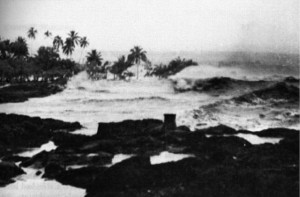 Most of us think of April 1st as April Fools Day…a day recognized all over the world as a day set aside to pull pranks, hoaxes, and practical jokes on your friends neighbors and co-workers. I can remember many pranks pulled by my sisters, my parents, and me over the years. But, not everything that happens on April 1st can be considered a funny joke…as was the case on April 1, 1946, when a 7.4 magnitude earthquake was recorded in the North Pacific Ocean off of Unimak Island. The island is a part of the Aleutian chain in Alaska. When the earthquake struck, in the middle of the night, 13,000 feet beneath the surface of the ocean, a devastating tidal wave immediately hit the nearest land…Unimak Island. The wave estimated at 100 feet high, crashed into a lighthouse located 30 feet above sea level, where a five people lived. The lighthouse was smashed and the people living inside were killed instantly. They had no warning of impending disaster and death.
Most of us think of April 1st as April Fools Day…a day recognized all over the world as a day set aside to pull pranks, hoaxes, and practical jokes on your friends neighbors and co-workers. I can remember many pranks pulled by my sisters, my parents, and me over the years. But, not everything that happens on April 1st can be considered a funny joke…as was the case on April 1, 1946, when a 7.4 magnitude earthquake was recorded in the North Pacific Ocean off of Unimak Island. The island is a part of the Aleutian chain in Alaska. When the earthquake struck, in the middle of the night, 13,000 feet beneath the surface of the ocean, a devastating tidal wave immediately hit the nearest land…Unimak Island. The wave estimated at 100 feet high, crashed into a lighthouse located 30 feet above sea level, where a five people lived. The lighthouse was smashed and the people living inside were killed instantly. They had no warning of impending disaster and death.
The Wave then headed toward Hawaii, at 500 miles an hour. Hawaii was 2,400 miles south of the epicenter. 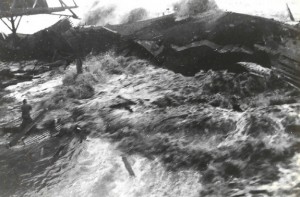 Captain Wickland of the United States Navy spotted the coming wave at about 7am…four and a half hours after the quake. Wickland’s position on the bridge was 46 feet above sea level, and he said he was eye level with a “monster wave” that was two miles long. I can only imagine how he must have felt looking at that wave. The word helpless is the first word to come to my mind. As the wave came into Hilo Bay, the water first receded, leaving ships on the sea floor beside fish flopping in the sand. Then, the tsunami struck full force. The wave was 32 feet high, and it completely destroyed about a third of the city. The Wailuku River bridge was picked up and relocated 300 feet from it’s original position. In Hilo, 96 people lost their lives. Other parts of Hawaii were hit by waves up to 60 feet. In Laupahoehoe, a schoolhouse was crush, killing the teacher and 25 students. The tsunami was seen as far away as Chili, where unusually high waves crashed ashore 18 hours after the earthquake hit. There were no casualties were reported there.
Captain Wickland of the United States Navy spotted the coming wave at about 7am…four and a half hours after the quake. Wickland’s position on the bridge was 46 feet above sea level, and he said he was eye level with a “monster wave” that was two miles long. I can only imagine how he must have felt looking at that wave. The word helpless is the first word to come to my mind. As the wave came into Hilo Bay, the water first receded, leaving ships on the sea floor beside fish flopping in the sand. Then, the tsunami struck full force. The wave was 32 feet high, and it completely destroyed about a third of the city. The Wailuku River bridge was picked up and relocated 300 feet from it’s original position. In Hilo, 96 people lost their lives. Other parts of Hawaii were hit by waves up to 60 feet. In Laupahoehoe, a schoolhouse was crush, killing the teacher and 25 students. The tsunami was seen as far away as Chili, where unusually high waves crashed ashore 18 hours after the earthquake hit. There were no casualties were reported there.
The tsunami brought to light a need for some kind of a warning system. The warning system, called the Seismic SeaWave Warning System was established two years later. It is now known as the Pacific Tsunami  Warning System, and it uses undersea buoys throughout the ocean, along with seismic activity detectors to predict killer waves. The system is still in use, and has warned many people in time to get to safety. Nevertheless, on its first use…November 4, 1952, the people evacuated successfully, but the wave never materialized. I suppose that could have been listed as a successful failure, but in that case, it wasn’t about whether or not the wave came, but rather, if it did, that the people were safely away. A system like this one can’t save everyone. I’m sure that some waves just get to land too quickly, but every life saved matters. The April Fools Day tsunami was on April 1st, but no one would call it a joke… and that’s for sure.
Warning System, and it uses undersea buoys throughout the ocean, along with seismic activity detectors to predict killer waves. The system is still in use, and has warned many people in time to get to safety. Nevertheless, on its first use…November 4, 1952, the people evacuated successfully, but the wave never materialized. I suppose that could have been listed as a successful failure, but in that case, it wasn’t about whether or not the wave came, but rather, if it did, that the people were safely away. A system like this one can’t save everyone. I’m sure that some waves just get to land too quickly, but every life saved matters. The April Fools Day tsunami was on April 1st, but no one would call it a joke… and that’s for sure.
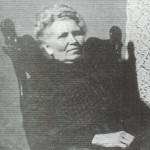 My Great Great Aunt Ida Spencer Brown Nass, married Andrew Alfred Brown on October 1, 1872. They had two sons, Elmer Ellsworth and Andrew Alfred. It is unknown what happened to Ida’s first husband, but she later married Sjur Johannesson Nass, who went by Samuel, and they had two daughters, Ellen and Ethel.
My Great Great Aunt Ida Spencer Brown Nass, married Andrew Alfred Brown on October 1, 1872. They had two sons, Elmer Ellsworth and Andrew Alfred. It is unknown what happened to Ida’s first husband, but she later married Sjur Johannesson Nass, who went by Samuel, and they had two daughters, Ellen and Ethel.
Ida and Andrew’s son Andrew Alfred, who usually went by A.A. Brown, married a woman names Emma Caroline Haessler. Their marriage was filled with love, and blessed with ten children, Gertrude Flora, Alwyn A, Emma Henrietta, John Henry “Johnie”, Bessie, Warren Winston, Elizabeth Ida, Edward Spencer, James Robert, and Fredrick Valden. While their lives were happy, they were not long. Emma passed away on October 31, 1918, leaving Andrew to raise their seven children…a difficult task with small families, but much harder for a man with seven children. Andrew was doing quite well with the task, even though his oldest daughter, Gertrude, who had most likely been a big help, was married on April 20, 1920, leaving him with one less helping hand around the house. Their son Alwyn had preceded his mother in death on June 10, 1918, as had Johnie on September 12, 1905 at 3 years of age, and Bessie on September 10, 1905 at 3 months of age.
On January 29, 1921, tragedy would again strike the family, when Andrew was killed in The Great Olympic Blowdown. The storm, which was one of the worst in Washington state 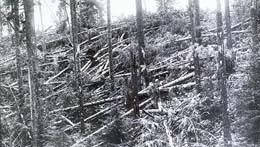 history, came in off the coast at around 8:00 am on January 29, bringing with it, hurricane force winds estimated at 125 to 150 mph. The Forest Service estimated the loss of timber at several billion board feet. The loss of life was one, Andrew A Brown, who was an engineer working at the Anderson-Middleton Lumber Mill in Aberdeen. He was killed instantly when a sudden gust blew down a smokestack pinning him against a broken steam pipe and scalding him to death.
history, came in off the coast at around 8:00 am on January 29, bringing with it, hurricane force winds estimated at 125 to 150 mph. The Forest Service estimated the loss of timber at several billion board feet. The loss of life was one, Andrew A Brown, who was an engineer working at the Anderson-Middleton Lumber Mill in Aberdeen. He was killed instantly when a sudden gust blew down a smokestack pinning him against a broken steam pipe and scalding him to death.
Once again, a grieving Gertrude, who had married Patrick Mint House, stepped in, taking the remaining six children into their home and raising them as their own. Emma was 21 years old by then, so I don’t know if she lived with her sister or not, but the rest of the children ranged in ages from 4 years to 14 years. The littlest ones would most likely not even remember their parents very clearly in the coming years. Their parents hadn’t shared memories of their childhood even with their eldest daughter, Gertrude, so the memories the younger children would have would only be what little bits and pieces she could tell them of her childhood years with their parents. I have to commend Gertrude and Patrick for their heroic and selfless act of taking in her siblings. I can only imagine how hard that must have been for them. In looking through the genealogy records, I can’t find any evidence of Gertrude and Patrick having any children of their own. I don’t know 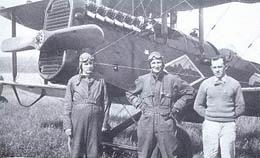 if that was because they were unable to have children or that they had a ready made family. Either way, I find that very sad, because I think they must have been wonderful, loving parents. I imagine that it was an enormous job to take on six children…especially when one is only 23 years old herself. Still, they were family and she loved them. She could not bear to have them go to an orphanage, so she and her husband did what they had to do, and raised her siblings in a happy, loving home…an act of kindness the children never forgot.
if that was because they were unable to have children or that they had a ready made family. Either way, I find that very sad, because I think they must have been wonderful, loving parents. I imagine that it was an enormous job to take on six children…especially when one is only 23 years old herself. Still, they were family and she loved them. She could not bear to have them go to an orphanage, so she and her husband did what they had to do, and raised her siblings in a happy, loving home…an act of kindness the children never forgot.

